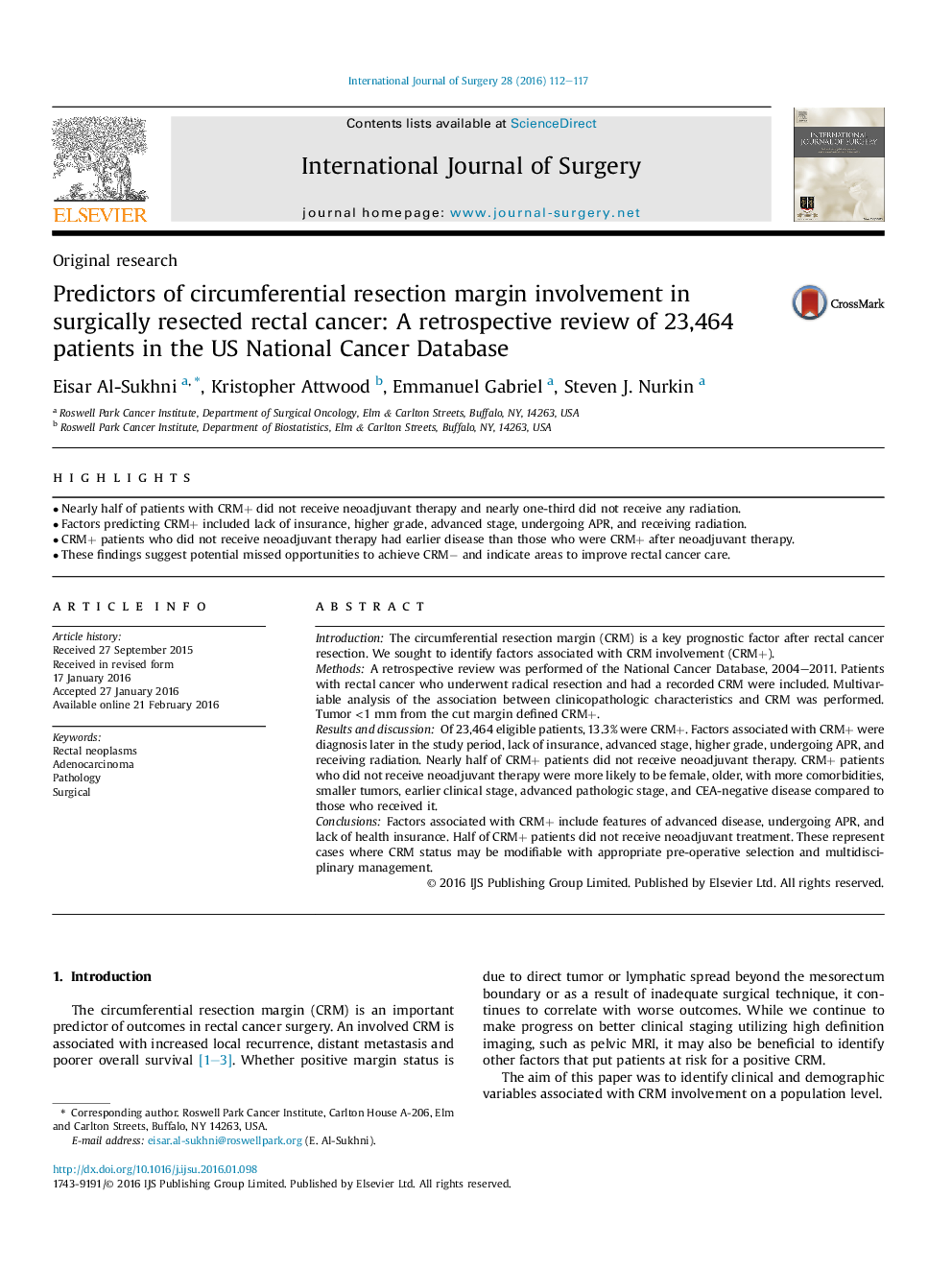| Article ID | Journal | Published Year | Pages | File Type |
|---|---|---|---|---|
| 4285468 | International Journal of Surgery | 2016 | 6 Pages |
•Nearly half of patients with CRM+ did not receive neoadjuvant therapy and nearly one-third did not receive any radiation.•Factors predicting CRM+ included lack of insurance, higher grade, advanced stage, undergoing APR, and receiving radiation.•CRM+ patients who did not receive neoadjuvant therapy had earlier disease than those who were CRM+ after neoadjuvant therapy.•These findings suggest potential missed opportunities to achieve CRM− and indicate areas to improve rectal cancer care.
IntroductionThe circumferential resection margin (CRM) is a key prognostic factor after rectal cancer resection. We sought to identify factors associated with CRM involvement (CRM+).MethodsA retrospective review was performed of the National Cancer Database, 2004–2011. Patients with rectal cancer who underwent radical resection and had a recorded CRM were included. Multivariable analysis of the association between clinicopathologic characteristics and CRM was performed. Tumor <1 mm from the cut margin defined CRM+.Results and discussionOf 23,464 eligible patients, 13.3% were CRM+. Factors associated with CRM+ were diagnosis later in the study period, lack of insurance, advanced stage, higher grade, undergoing APR, and receiving radiation. Nearly half of CRM+ patients did not receive neoadjuvant therapy. CRM+ patients who did not receive neoadjuvant therapy were more likely to be female, older, with more comorbidities, smaller tumors, earlier clinical stage, advanced pathologic stage, and CEA-negative disease compared to those who received it.ConclusionsFactors associated with CRM+ include features of advanced disease, undergoing APR, and lack of health insurance. Half of CRM+ patients did not receive neoadjuvant treatment. These represent cases where CRM status may be modifiable with appropriate pre-operative selection and multidisciplinary management.
